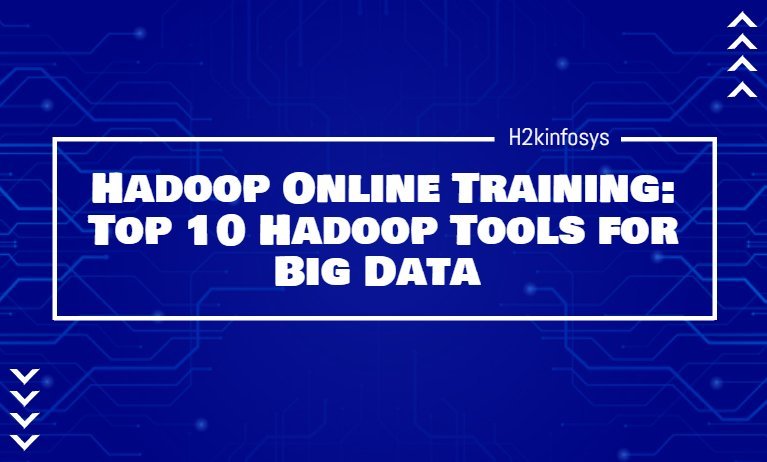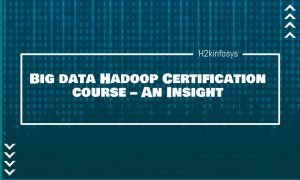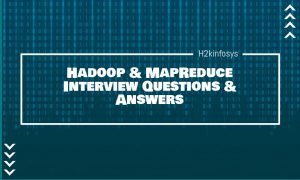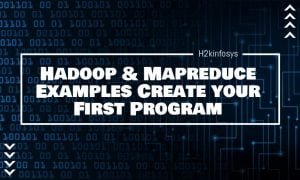Hadoop online training offers the advantage of picking the most trending Hadoop tools from the best learning platforms available today. Hadoop is a fast-evolving ecosystem and the most sought-after software courses of late. Why? And what are the most essential Hadoop tools should you learn if you are enrolling for a course? Let’s see the answers to these two questions in this blog.
What is Big Data Hadoop?
The Hadoop ecosystem has become fundamental for big data storage and analysis. Data Science and Hadoop have almost become inseparable. Why? Data analytics hugely relies on Hadoop’s distributed file system and its numerous accomplices to perform data storing, cleansing, processing, and analyzing the data.
Ever since 2006, when Hadoop was first released, the ecosystem is constantly emerging with newer tools. Let’s see the most powerful and essential Hadoop tools that you should learn during the big data Hadoop online classes to meet the demand in the IT market.
Top 10 Big Data Hadoop tools
HDFS
What is HDFS? Hadoop Distributed File System is the backbone of Hadoop’s ecosystem.
- This is the much talked about storage system of Hadoop which can store different types of data – structured, semi-structured, and unstructured.
- Although we consider the entire HDFS as a single unit, it comprises various resources where it effectively stores the data. A single file is split into data blocks of 128 MB and stored across the DataNodes.
- HDFS essentially has two components – the NameNode (master node) and the DataNode(slave node).
- The NameNode is the master node that doesn’t store any actual data but contains the meta-data which contains the size of the file, the replication factor, time map, permissions, etc.
- The actual data is stored in the DataNode, which is commodity hardware like laptops, discs, etc in the distributed system.
- When a developer or an administrator hopes to store data in the HDFS, they communicate the NameNode, which in turn requests the client to store the data in the DataNodes.
YARN
While HDFS is the backbone, YARN is the brain of the Hadoop ecosystem. It manages all the resources in HDFS. It not only allocates the resources but also schedules the tasks.
- YARN has two main components – ResourceManager and NodeManager. ResourceManager is the main node that undertakes the processing.
- The ResourceManager accepts the requests and passes on to the corresponding NodeManagers which takes care of the actual processing.
- The NodeManagers are present on each DataNode which sees to it that all the tasks are executed by the DataNode.
The ResourceManager has two components – Schedulers and ApplicationsManager
- Schedulers are those components which allocate the resources based on the application requirement.
- ApplicationsManager accepts the job from the client and contacts the containers which are the DataNode environment. The containers are responsible for monitoring the process and executing the ApplicationsMaster.
The ApplicationMasters are the daemons that sit on top of DataNode and communicate with the containers. They negotiate with the containers to execute the tasks on each DataNode.

MapReduce
MapR is an integral part of the Hadoop Ecosystem. It handles the logical component of the data processing.
Map() and Reduce() are two functions.
- The map handles the filtering, grouping, and sorting of the data.
- Reduce performs the aggregates and summarizes the results produced by Map.
- Map produces the result called the key-value pair (K, V)which becomes the input for Reduce.

In the above example, the Map function sorts the students belonging to the same department. Then represents the data as a key-value (K, V) pair.
The Reduce function then takes the output of the Map function and performs operations on it to find the required result.

Spark
Apache Spark when works on top of Hadoop’s HDFS is said to make an ideal combination. Many large companies use Spark with Hadoop to perform analysis on data stored in Hadoop’s HDFS. Spark is 100x faster than Hadoop where real-time data processing is concerned.
For unstructured data storage and batch processing, Hadoop is the answer.
Spark is written in Scala and developed by the University of Berkley, California. As opposed to MapR, Spark performs in-memory computations and increases the overall speed to computations.
Pig
Yahoo developed Pig originally. It was named Pig because of its ability to process any kind of data.
It is a high-level data analyzing platform for large data sets. Rather than focusing on how the data is analyzed like in MapR, Pig focuses on handling larger data sets for analysis.
- There are two main components of Pig – Pig Latin and Pig runtime.
- Pig Latin is the programming language of Pig which is more like SQL and is very expressive. Meaning, 10 lines of Pig Latin is equivalent to approximately 200 lines of MapR code.
- The compiler of Pig basically converts the Pig code to MapR and it is the MapR which executes the job of analysis.
- Pig is an ideal platform to perform ETL (Extraction, Transformation, and Loading), processing, and analysis of data.
Hive
This is a data warehousing tool that helps in reading, writing, and managing large data sets in an SQL-like environment.
- It is for people who are fluent with SQL.
- Hive + SQL= HQL (Hive Query Language)
- Its main components are – Hive Command-Line, JDBC/ODBC driver
- Hive command line is for executing HQL commands
- JDBC and ODBC drivers are used to establish connections from data storage.
- Hive is ideal for performing operations on large datasets for batch query processing and real-time or interactive query processing.
HBase
HBase is an open-source, column-oriented, non-relational, distributed, NoSQL database.
- It can support all sorts of data in the Hadoop ecosystem.
- It works on top of Hadoop’s HDFS.
- HBase is written in Java, however, supports Avro, REST, and Thrift.
- HBase works with Hive to enable fault-tolerant Big Data applications.
Mahout
Mahout is the kingpin for performing Machine Learning techniques.
- It drives collaborative filtering where it sorts the behavior, patterns, and characteristics of users based on which it makes recommendations.
- It can cluster similar kinds of data together such as grouping the articles together – blogs, news, essays, etc.
- The software can further classify the blogs into one group, essays into another, news as another set, and so on.
- It makes recommendations based on the frequent patterns followed by the buyers. For instance, if a buyer purchased bread, it can recommend jam to go with it.
Mahout has a vast Machine Learning Library where it has predefined in-built algorithms.
Flume
Flume helps in ingesting the semi-structured and unstructured data into HDFS.
It essentially facilitates the online streaming data from social media, emails, log files, to ingest in HDFS.

The Flume is the intermediary between the Web Server and HDFS.
The Flume agent has three components- Source, Channel, and Sink.
- Source takes the data from the resources and forwards it to Channel.
- Channel acts as the primary storage or temporary storage between the source of data and permanent data in HDFS.
- Sink takes the data from Channel and writes permanently in HDFS.
Zookeeper
This acts as the coordinator for any Hadoop job. Though it is a simple service, before Zookeeper emerged, coordination between various Hadoop services was time-consuming.
The various applications in the Hadoop ecosystem can synchronize their tasks by updating their status in the Zookeeper’s znode. The Zookeeper servers support large Hadoop clusters.
Conclusion:
Many online courses these days offer a comprehensive big data analytics training and placement service. Opt for the right Hadoop online course and foray into the world of big data analytics.
























One Response